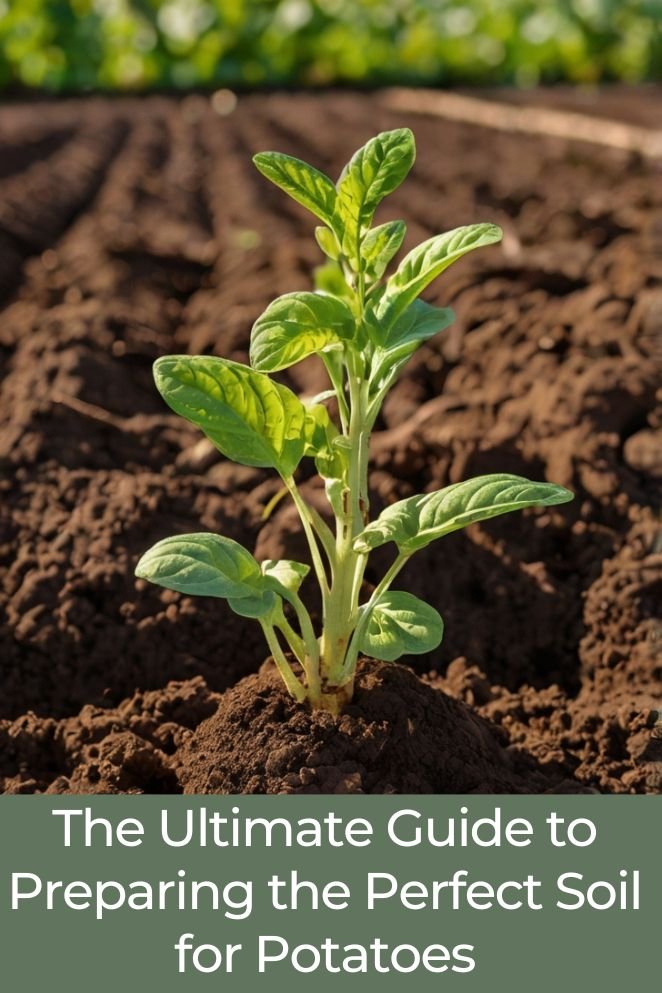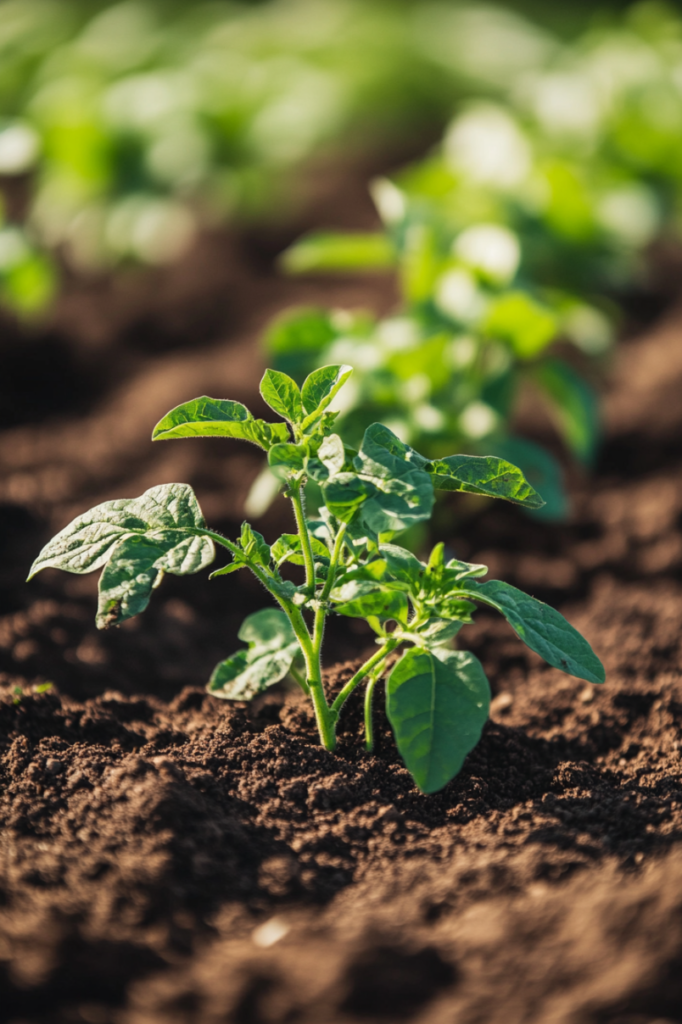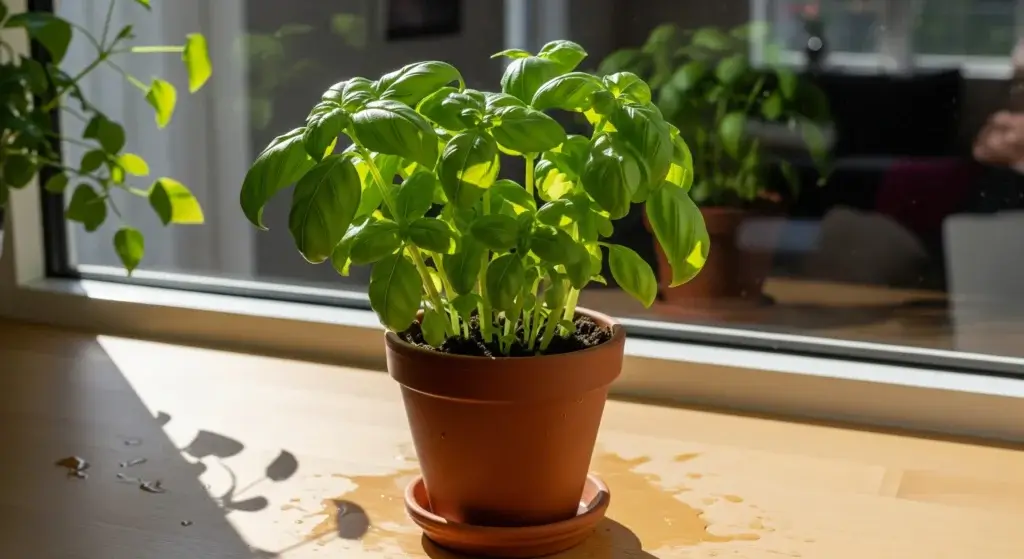
Potatoes are a versatile and beloved staple food enjoyed worldwide.
While many factors contribute to a bountiful potato harvest, the foundation of any successful crop lies in the quality of the soil.
Just as a house needs a strong foundation, potatoes thrive in soil that provides the ideal environment for their growth.
Understanding the soil’s elements such as texture, pH, drainage, and nutrient content that are ideal for potatoes is crucial for maximizing your potato yield and producing tubers that are flavorful and nutritious.
Potato Soil Preferences
Growing healthy and productive potato plants begins with understanding and optimizing the soil they grow in.
Potatoes have specific soil preferences that, when met, can lead to a bountiful harvest.
Key Characteristics of Ideal Potato Soil:
- Well-drained : Excess water can cause problems.
- Loamy soil: Offers a good balance of sand, silt, and clay for structure and nutrient retention.
- Loose and friable: Easy for roots to penetrate.
- Rich in organic matter: Improves soil structure and fertility.
- Slightly acidic pH: Between 5.0 and 6.5 is optimal.
Here’s a detailed look at the ideal soil conditions for growing potatoes:
Ideal soil type
Potatoes thrive best in loamy soil, which is a balanced mix of sand, silt, and clay.
This combination provides the ideal environment because it retains moisture without becoming waterlogged and offers enough airspace for roots to spread easily.
Loamy soil also drains well, reducing the risk of root rot while still holding enough nutrients for the plants.
If your garden soil isn’t naturally loamy, you can create it by amending your existing soil.
For sandy soil, add organic matter like compost, which will help retain moisture and nutrients.
Although sandy soil can be used to grow potatoes, it requires more frequent watering and fertilization due to its quick drainage and low nutrient-holding capacity.
For clay-heavy soil, amend it with organic matter and coarse sand to improve its structure, allowing better drainage and root penetration.
Potatoes in clay soil face the challenge of poor drainage, which can lead to waterlogging and root rot.
- Read also: Potato Watering Requirements: Keep Your Potatoes Healthy
- Read also: The Ultimate Guide to Companion Plant for Luscious Potatoes

Soil pH level
Potatoes prefer slightly acidic soil with a pH between 5.0 and 6.5.
Maintaining this pH range is crucial because soil that is too alkaline (above 7.0) can cause scab disease, which manifests as rough, scabby patches on the potato tubers, reducing their quality and marketability.
Regularly test your soil’s pH using a home testing kit or by sending a sample to your local extension office.
These tests will help you determine if your soil is within the optimal range for potato cultivation.
Soil texture and structure
Soil texture refers to the size of its particles.
Potatoes grow best in soil that has a fine texture, allowing roots to spread easily.
Coarse or compacted soil can impede root growth, leading to smaller or deformed potatoes.
Soil structure is the way soil particles are arranged, affecting its porosity and aeration.
Potatoes need a loose, crumbly structure that allows their roots and tubers to expand freely.
A well-structured soil also promotes good drainage and air circulation, which are vital for healthy potato growth.
Soil drainage and aeration
Potatoes require well-drained soil to prevent waterlogging, which can suffocate roots and encourage diseases like rot.
Poorly drained soil keeps water around the roots, depriving them of oxygen and leading to unhealthy plants.
If your soil is prone to waterlogging, consider planting potatoes in raised beds or hills, which lift the plants above the surrounding soil level, allowing excess water to drain away.
Good soil aeration is crucial for potato plants, as it ensures that roots receive enough oxygen to function properly.
Compacted soil restricts air flow, leading to poor root development and stunted growth.
Preparing the Soil

Soil testing and analysis
Before planting, it’s essential to test your soil to understand its composition and nutrient levels.
Soil testing kits are widely available and easy to use.
Alternatively, you can send a sample to a local agricultural extension service for a more detailed analysis.
The results will help you determine what amendments your soil needs to become the perfect growing medium for potatoes.
Adding organic matter
One of the best ways to improve soil for potatoes is by adding organic matter such as compost or well-rotted manure.
Organic matter enriches the soil with nutrients, improves its structure, and enhances moisture retention.
Compost also supports beneficial soil microbes that help break down nutrients, making them more available to your plants.
When preparing your soil, work in several inches of compost or manure into the top 6-8 inches of soil.
This not only provides a nutrient-rich environment for your potatoes but also helps improve drainage and aeration.
Improving soil structure
Tilling the soil is an essential step in preparing your garden for potatoes.
Tillage breaks up compacted soil, mixes in organic matter, and creates a loose, crumbly texture that is ideal for root growth.
However, be careful not to over-till, as this can break down soil structure and lead to compaction over time.
Aeration is another critical component of soil preparation.
If your soil is heavy or compacted, consider using a garden fork or aerator to loosen it before planting.
This will improve oxygen flow to the roots and help prevent issues like root rot.
After planting, avoid walking on the soil around your potato plants to prevent compaction.
Mulching with organic material can also help maintain soil aeration while conserving moisture.
Fertilization
Potatoes are heavy feeders, meaning they require a lot of nutrients to produce a good crop.
After preparing your soil, it’s essential to fertilize it adequately.
A balanced fertilizer with a 10-10-10 ratio (Nitrogen-Phosphorus-Potassium) works well for potatoes.
Apply fertilizer according to the instructions on the package, usually a few weeks before planting.
You can also side-dress your potato plants with additional fertilizer midway through the growing season to give them a nutrient boost.
Preventing soil-borne diseases
Soil-borne diseases, such as scab and blight, can be a significant problem for potato growers.
One of the best ways to prevent these diseases is by rotating your crops.
Avoid planting potatoes in the same spot where other nightshade plants (like tomatoes, peppers, or eggplants) have grown in the past three years.
Additionally, maintaining slightly acidic soil (pH 5.0-6.5) can help prevent scab disease.
Ensure good drainage and avoid over-watering, as wet conditions can encourage fungal infections.
If you’ve had issues with soil-borne diseases in the past, consider planting disease-resistant potato varieties.

- Read also: The Ultimate Foe: Common Potato Pests and How to Defeat Them
- Read also: DIY Potato Planter Box: A Step-by-Step Guide to Growing Spuds
Conclusion
Growing potatoes successfully starts with the soil.
By understanding and preparing the right type of soil, you can ensure a bountiful harvest of healthy, delicious potatoes.
Remember to test your soil, amend it with organic matter, and maintain proper drainage and aeration.
With these tips, you’ll be well on your way to becoming a potato-growing pro.
FAQs
Fertilize before planting and again midway through the growing season. Avoid over-fertilizing, as this can lead to lush foliage but poor tuber development.
Poor growth, yellowing leaves, small or deformed tubers, increased disease susceptibility.
Yes, you can grow potatoes in containers. Use a good quality potting mix and ensure the container has adequate drainage.



